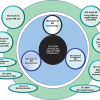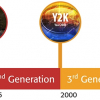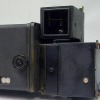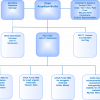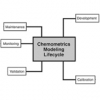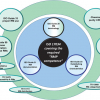Peter J. Jenks
the Jenks Partnership, Newhaven House, Junction Road, Alderbury, Salisbury, Wiltshire SP5 3AZ, UK
This is the 34th RM Column and over the last seven years we have looked at reference materials (RMs) from just about every possible angle and re-visited some topics more than once. Whilst we have focussed mainly on RMs, over time there has been a change in the way RMs are used and their importance to analytical laboratories.
In analytical laboratories worldwide the new mantra is “Quality Matters”: the driving force is ISO 17025:2005 and as more and more analytical laboratories of all types, disciplines and interests seek external accreditation to this standard they join the never ending quality improvement journey. RMs play a vital part in achieving and maintaining analytical quality, but they are certainly not all there is, other vital components play their part.
What has driven the rapid spread of accreditation? The answer can be traced back to a seemingly unimportant meeting in 1977 and the work of a small group of visionaries. An organisation now known as The International Laboratory Accreditation Cooperation (ILAC) grew out of a meeting in 1977. That meeting had a theme that is, with the benefit of hindsight, breathtaking in its ambition. To develop international cooperation to facilitate trade by promotion of the mutual acceptance of accredited test and calibration results. Put simply, the ideal was to have an international agreement that allowed a measurement made in one place to be accepted everywhere.
Over the nest 22 years the work was largely behind the scenes, but in 1996, ILAC became a formal cooperation with a charter to establish a network of mutual recognition agreements among accreditation bodies that would fulfil this aim.
On 2 November 2000, 36 laboratory accreditation bodies, full members of the International Laboratory Accreditation Cooperation (ILAC), from 28 economies worldwide signed an “arrangement” in Washington, DC, USA, to promote the acceptance of technical test and calibration data for exported goods. At this point the “Measured once, accepted everywhere” ideal took a big step towards reality.
The arrangement came into effect on 31 January 2001. The “ILAC Arrangement” provides significant technical underpinning to international trade. The key to the Arrangement is the developing global network of accredited testing and calibration laboratories that are assessed and recognised as being competent by ILAC Arrangement signatory accreditation bodies. The signatories have, in turn, been peer-reviewed and shown to meet ILAC’s criteria for competence.
For the analytical chemist the mechanism that makes all this possible is ISO 17025. This standard first appeared in 1999 and was revised in 2005. This latest version is the accreditation standard is demanding and searching: for anyone working in a lab that is or is working to ISO 17025:2005, quality really does matter!
During a recent Editorial Meeting we reviewed the RM Column and asked if it still met the needs of the readership. We concluded it did, but could do better. After much discussion we decided that we should widen the remit of the column to all things related to Quality. The new name “Quality Matters” seems to encapsulate everything that is to do with analytical quality.
From the next edition the heading will change to “Quality Matters” and the scope will be much wider. Under this new title we will look at all the main areas that ISO 17025 encompasses. ISO 17025 is essentially the accreditation of a management system: by having a robust and validated management system and process the end result of the analytical process is expected to achieve the designated quality level that has been set by the testing laboratory.
Section 4.2.1 of ISO 17025:2005 makes this very clear, it states: ”The laboratory shall establish, implement and maintain a management system appropriate to the scope of its activities. The laboratory shall document its policies, systems, programmes, procedures and instructions to the extent necessary to assure the quality of the test and/or calibration results. The system’s documentation shall be communicated to, understood by, available to, and implemented by the appropriate personnel.”
The full standard is wide ranging and the derivations of it, for example the UK Environment Agency’s “MCERTS Standards for Environmental Testing” go further. This column will focus on at the technical requirements of the Standard and in particular on the following key areas that are important to the analytical chemist:
- Test and calibration methods and method validation
- Selection of methods
- Validation of methods
- Equipment
- Calibration
- RMs, CRMs and standards
- Sampling
- Reporting
But our list is not exhaustive and if there is a topic you feel needs to be addressed, please contact Ian Michael. More importantly if you have something you’d like to contribute to this evolving debate please let us know: we welcome new contributors!
To cover this enhanced scope the editorial team will expand: there will be a couple of new names joining me in the preparation of the new column. I will introduce the new authors with their first contribution to the column.


